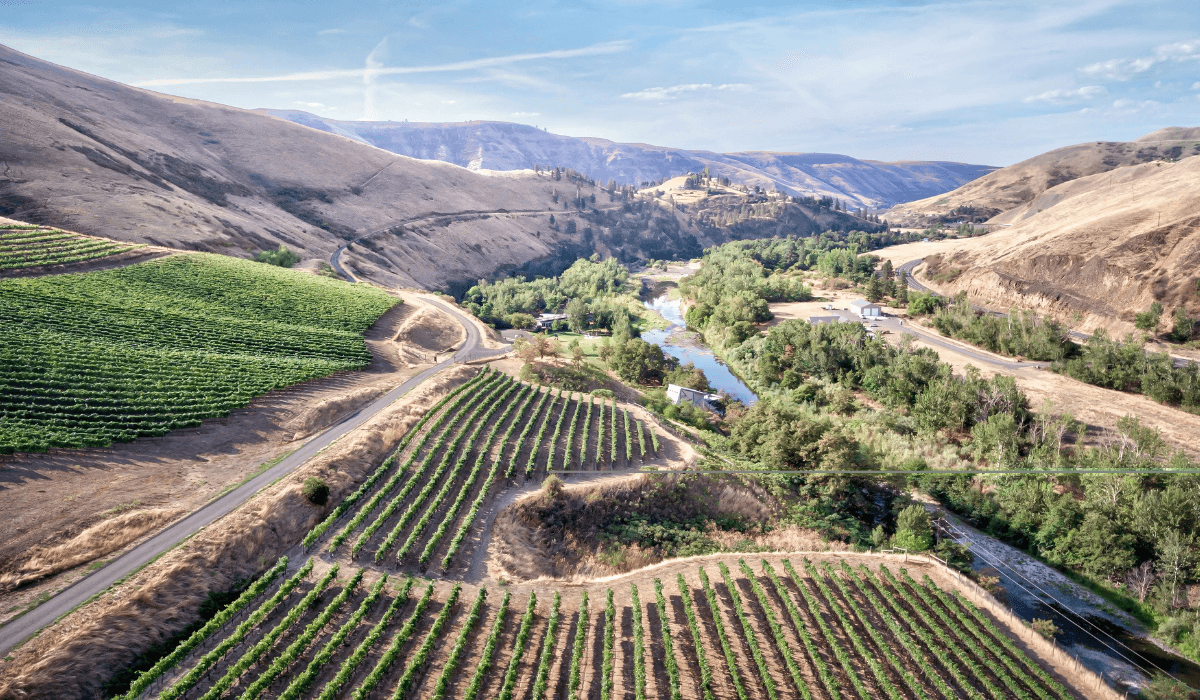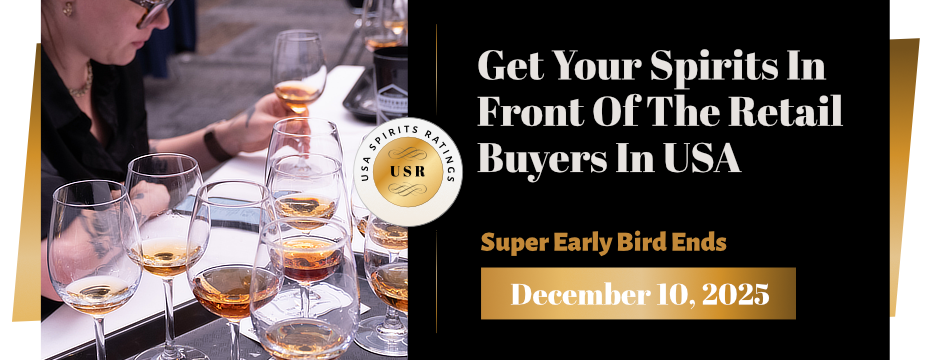Sommeliers Choice Awards 2025 Winners
From Quality to Community: The Vision Behind Idaho’s Wine Evolution
Idaho’s distinctive terroir meets innovative leadership.

Over the past decade, Idaho’s wine industry has blossomed into a vibrant and nationally recognized sector, thanks in no small part to the leadership of Moya Shatz Dolsby, Executive Director of the Idaho Grape Growers and Wine Producers Commission. Tasked with uniting growers, winemakers, and stakeholders, Dolsby is steering the industry from relative obscurity to a position of respect in the competitive U.S. wine market. Idaho’s unique terroir—characterized by its high desert climate, volcanic soils, and dramatic diurnal temperature shifts—has become a stage for remarkable wines that are making waves beyond state lines. In this conversation, Dolsby shares her insights on the growth of Idaho’s wine industry, its future potential, and the collaborative culture that makes it all possible.

Image: Idaho’s American Viticulture Areas (AVA), Source: IWC.
The Idaho wine industry has grown significantly under your leadership. What has driven this growth, and what is your long-term vision for the industry as it gains national recognition?
A lot has contributed to this growth—being in the right place at the right time with the right people. I excel at getting people excited, breaking down barriers, building connections, and bringing them to a "yes." I don’t often take "no" for an answer; if I’m passionate about something, I find a way to make it happen.
As for my long-term vision, I wanted Idaho to have 100 wineries, 10,000 acres planted, and produce a million cases of wine each year. However, given the current climate of the wine industry, my perspective is changing a bit. Now, I want the industry to focus on quality rather than size. I want us to grow the best grapes to make the best wine possible.
With such a unique combination of climate, soil, and altitude, Idaho has the foundation for a distinctive wine profile. How would you describe Idaho’s terroir, and which grape varieties do you believe showcase its potential best?
Idaho has a high desert climate with a significant diurnal range and varying elevations that enhance the aromatics and freshness of our wines. Our volcanic, glacial, and alluvial soils contribute to the distinct characteristics of our wines. With four distinct seasons, our growing season benefits greatly. We cultivate all vinifera varieties, excelling in grapes such as Tempranillo, Viognier, Syrah, and many others.

Image: Idaho grapes on the vine. Source: IWC.
Idaho wines have begun making a mark beyond state borders. What strategies has the commission implemented to increase Idaho’s wine presence nationally, and are there particular markets where you see the most potential?
We try to visit major media markets every few years, such as New York, Los Angeles, and San Francisco, because we recognize that the media landscape frequently evolves. We encourage wineries to participate in wine competitions. Additionally, we conduct virtual media missions and strive to establish personal connections with media representatives, ensuring they feel welcome in Idaho. I like to say that Idaho is all about friends, family, and dogs.
The Idaho Wine Commission plays an active role in supporting winemakers and growers. Could you elaborate on how the Commission’s initiatives—like Idaho Wine Month—are shaping the industry? What are the Commission's current priorities for Idaho’s wine sector?
Our mission is to promote and market all Idaho wineries. We accomplish this by advocating for beneficial legislation, providing education to consumers and the industry, and utilizing various marketing strategies. Over the years, we have developed numerous programs to support these efforts. One example is Idaho Wine and Cider Month in June, which encourages wineries and cideries to host special promotions and events to engage consumers with their products. We assist in promoting these events through various media outlets and host our large annual wine event, Savor Idaho.
Since the onset of COVID-19, many people have moved to Idaho. One of our main priorities is to reach out to these new residents and showcase the excellent wines that Idaho has to offer.

Image: Savor Idaho.
What sustainable practices are most prevalent among Idaho winemakers, and how is the Commission supporting sustainable growth within the industry?
Several times a year, we bring in inspiring speakers to empower the industry with knowledge about sustainability and host roundtables that foster collaboration among wineries and vineyards. We are dedicated to constantly seeking out ways to improve.

Image: Lewis-Clark Valley Vineyard River CC Source: IWC.
With Idaho’s wine regions becoming an appealing destination for wine tourism, what initiatives are in place to enhance the tourism experience and attract more visitors? How does the Commission work with local tourism agencies to boost Idaho wine tourism?
We collaborate closely with various tourism organizations in Idaho to effectively market and promote the state's wonderful attractions. Recently, we traveled to New York City with Visit Boise to engage in a media mission, sharing the many great aspects of Boise with journalists. We continually brainstorm and strategically utilize our resources to enhance the promotion of Idaho.
What do you see as the biggest challenges Idaho winemakers face today? How is the Idaho Wine Commission addressing these issues, and what opportunities do you believe the industry should capitalize on?
One of the biggest challenges facing Idaho winemakers is labor, and tariffs are becoming an additional concern. These tariffs impact essential winemaking supplies such as barrels, glass, and corks, adding to production costs. The Commission is working to educate the industry on these challenges and equip winemakers with the knowledge to navigate them effectively.
At the same time, there’s a significant opportunity to embrace technological advancements. While some equipment can represent a substantial upfront investment, it often leads to long-term savings in both time and resources for vineyards and wineries. By encouraging innovation and collaboration, we aim to help the industry overcome obstacles and position Idaho wine for sustainable growth.

Image: Idaho Wine Commission Team - (From Left to Right) Julianne “juls” Germain, Brenna Smith, Moya Shatz Dolsby and Ashlee Struble.
Idaho wine is known for being community-focused. How does this collaborative culture impact the industry, and what role does the Commission play in fostering this sense of community among winemakers?
Idaho is truly about friends, family, and even your dog—it’s a culture of connection and shared experiences. Here, people don’t ask where you live to compare houses; they’re simply figuring out how far apart you are so you can meet up. This same neighborly spirit is at the heart of our wine industry.
The Commission plays a vital role in fostering this sense of camaraderie through initiatives like industry roundtables, tasting room gatherings, and happy hours. These events allow winemakers to come together, share ideas, and build relationships. The people make the Idaho wine industry so unique, and we’re proud to help strengthen those bonds and celebrate the collaborative energy that drives us all forward.
As consumer tastes evolve, particularly with a younger generation interested in authenticity and sustainability, how is the Idaho wine industry adapting to meet these preferences?
The wine-tasting experience is undergoing an exciting transformation. It’s no longer just about sampling wines—it has become a more inclusive and dynamic activity. Today, wineries are hosting everything from book clubs and wreath-making classes to casual meetings, creating spaces that feel welcoming and accessible. This shift toward a less formal, more engaging atmosphere reflects the evolving preferences of modern consumers. We encourage Idaho wineries to embrace creativity and think outside the box, offering unique experiences that resonate with their audiences while showcasing the authenticity and quality of local wines.

Image: Idaho Wines, Source: IWC.
Looking forward, are there any specific projects or initiatives that the Commission is particularly excited about? What are some of the Commission’s main goals for the next few years?
Our focus is on refining our efforts to achieve a more meaningful impact. Rather than expanding in size, we aim to enhance the quality of our initiatives. One of our key goals is to engage with Idaho’s growing population by launching a “Drink Local, Support Local” campaign. This initiative is designed to connect with newcomers and foster a strong sense of community by highlighting the value of supporting local producers and businesses.
[[relatedPurchasesItems-61]]
Conclusion:
As Idaho’s wine industry continues to mature, its trajectory is clearly one of purposeful evolution rather than unchecked expansion. Moya Shatz Dolsby’s commitment to fostering quality, community, and sustainability ensures that Idaho remains both a promising wine region and a close-knit community of innovators. With strategic initiatives, a focus on education, and a deep respect for the land, the Idaho wine scene is poised to captivate both seasoned connoisseurs and curious newcomers. Guided by leaders like Dolsby, Idaho is not just producing wine—it’s crafting an identity, a legacy, and a story worth savoring.
In conversation with Malvika Patel, Editor and VP, Beverage Trade Network
Also Read:
From Vine to Vision: Insights from the Washington State Wine Commission
Scott Osborn’s Vision for WineAmerica and the Future of U.S. Wine Sustainability
Karissa Kruse's Vision: Pioneering Sustainability at Sonoma County Winegrowers


























